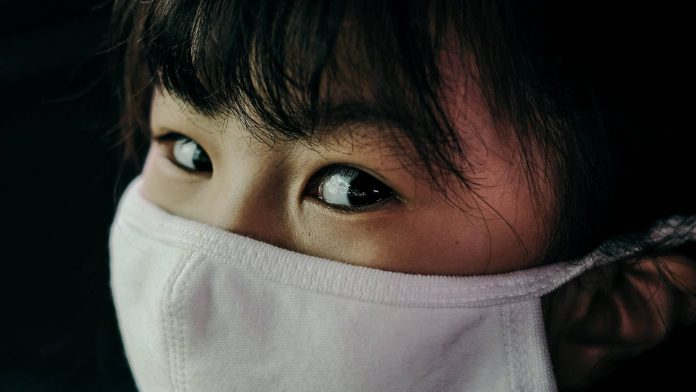We might not want to admit it, but the COVID-19 pandemic has taught us several things and might have brought about a new normal for us. Among them, the proper use and importance of face masks. Who would’ve thought that face masks will become a norm for us? But here we are, scouring online shops and more just to secure them for our family’s use.
Before COVID-19, our family had 2 to 4 packs of masks on-hand, most of which were required by my daughter’s school for her go-bag. Currently, we each have a reusable mask and several filters on-hand for our use. And while I’m praying that the pandemic will blow over soon, keeping face masks on-hand might still be a good idea. Here’s why:
If used properly, masks can minimize infection in the community.
Aside from COVID-19, masks can effectively minimize the spread of infectious diseases in the community. This includes the common flu, coughs, colds, and even other respiratory or viral ailments — most of which our kids can be exposed to in school (whether we’d like to admit it or not). So to better keep our community and our kids’ schools safe, we can let our school-aged kids wear face masks if:
- They’re going out with coughs or colds, especially if they intend to go to school that day. BUT if they have coughs, colds, and a fever, then it’s best to let them stay home, mask or no mask.
- If they’re presenting with “influenza-like” illness and have to go to the hospital or doctor’s clinic for consultation.
- If they’re going to a crowded healthcare setting (including the ER), whether they’re healthy or sick.
The next question is, how do we get our kids to wear them properly? Here are a few suggestions that could help:
Get him to understand the situation, but don’t scare him.
Try to be honest with your child and explain to him why he needs to wear one, while also keeping it as age-appropriate as possible. Tell them that masks are used to keep other people safe, so if he has coughs or colds, he can prevent his friends from having coughs and colds by wearing one. Emphasize the importance of having empathy and selflessness in such situations.
Involve him in the design.
You can ask him to contribute to the design of his mask — especially these days when a cloth mask is also a viable option since surgical masks are in short supply. Let him choose the fabric you’ll use — whether it’s an old shirt, pillowcase, or any cloth that features their favorite character. While you can use his choice of outer fabric, try to also follow the recommended inner fabric (and other materials) and construction so that your face mask will also provide him ample protection.
Practice at home.
Wearing a face mask can be uncomfortable even for us, so it’s understandable for kids to feel the same. So you can let him practice wearing it at home so that he’ll get more comfortable with it. You can get him to wear it for 30 mins on the first day, then for 1 hour the next, and so on. This way, you can also check and adjust so that it will fit him comfortably.
Make a game out of it.
To ensure that he wears it properly, you can motivate him by turning it into a game. Wearing the mask gives everyone 10 points. A point gets deducted every time someone touches his mask, or adjusts it, or takes it off before getting home or the designated time. The person who has the most points after wins the game.
Reward him for it.
If your child responds well to affirmations or incentives, you can use this to your advantage by giving him an incentive for wearing masks. It doesn’t have to be a toy or a big reward, you can give him something to look forward to after a day of mask-wearing such as an ice cream treat, stickers, or a love note — anything that can motivate your child.
Also, REMEMBER these if you intend to let your kids wear face masks for any of the aforementioned reasons:
- Face masks are not recommended for kids below 2 years of age. For kids aged 2 and above, it’s also best to use pediatric-sized or child-friendly face masks.
- Face masks should not be used on kids who are:
- Anxious
- Lethargic
- Restless
- Vomiting
- In respiratory distress
- When he’s wearing a mask, always check if your child is OK, especially if he’s uncharacteristically quiet, to ensure that his condition is not deteriorating.
- Explain to your child why he needs to wear and keep the face mask on.
- Instruct your child on how to properly wear and dispose of his face mask.
- Remind your child that wearing a face mask is not a replacement for proper hand washing or good hygiene.
Face masks are pretty hard to come by these days, especially pediatric-sized and kid-friendly face masks. But once the situation and the demand for them stabilizes, you can opt to get your disposable face masks from Orange and Peach and even reusable ones ( go for those with filter pockets) from enterprising Moms/online shops. Read here for more tips and tricks on getting your kids to properly use face masks.
Join our MomCenter Community on our Facebook page and Facebook group for more insights on motherhood and parenting.





